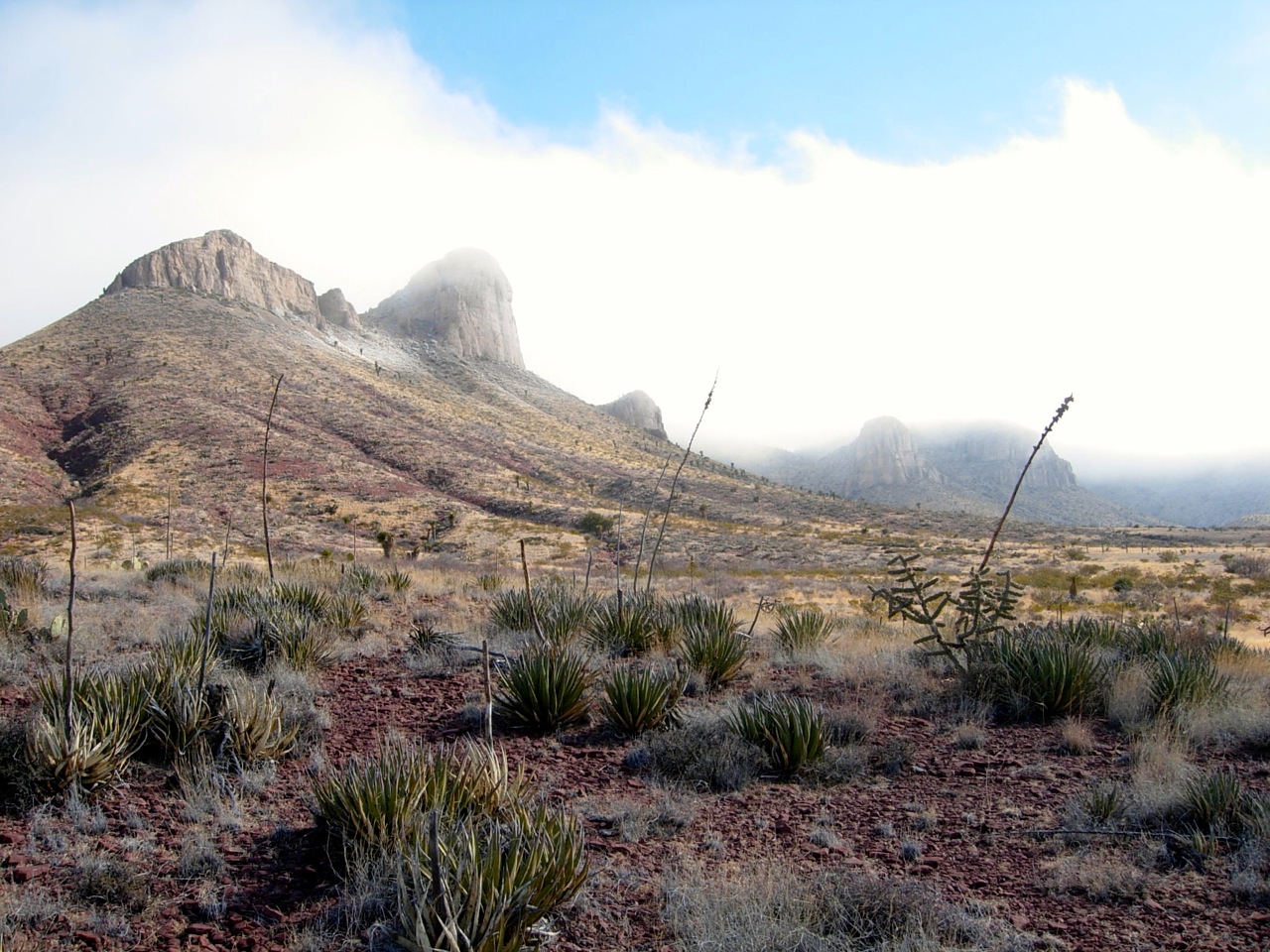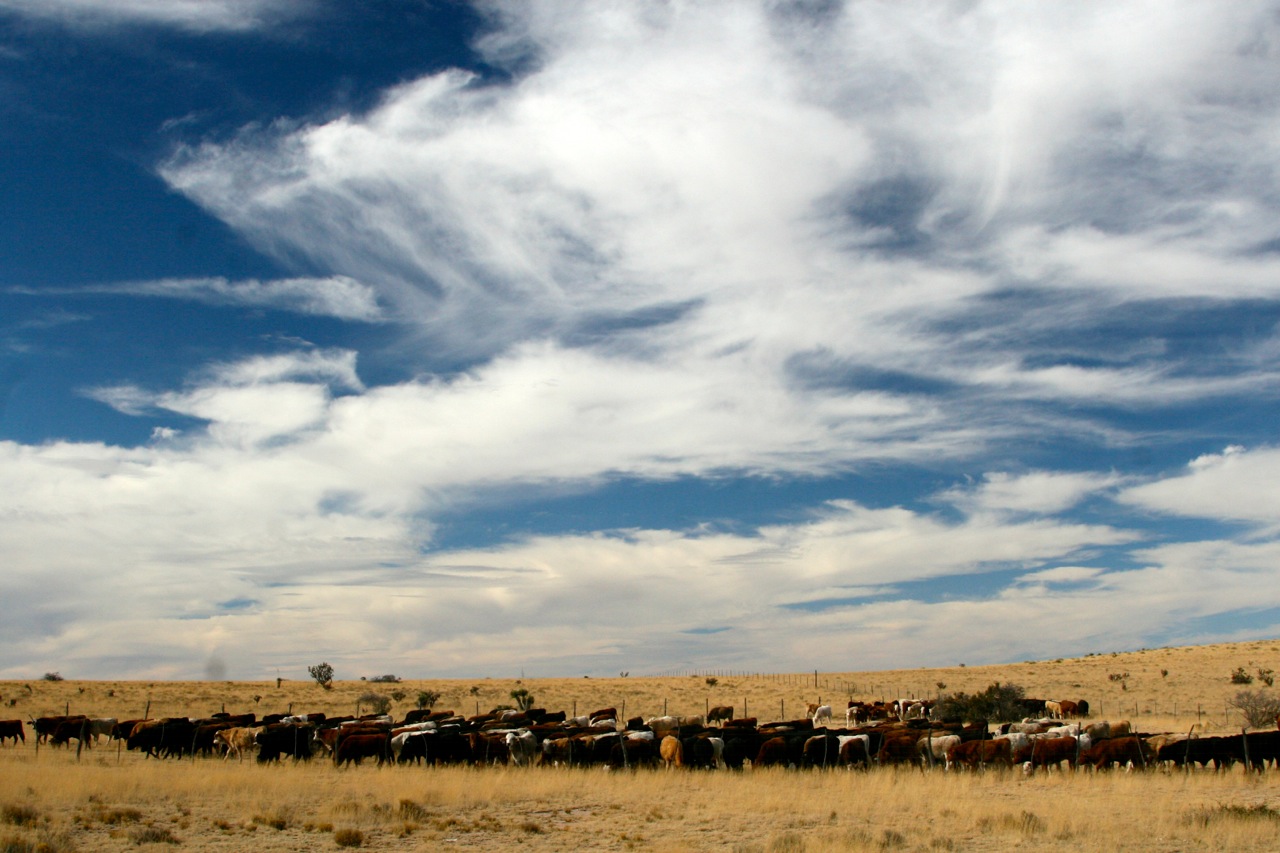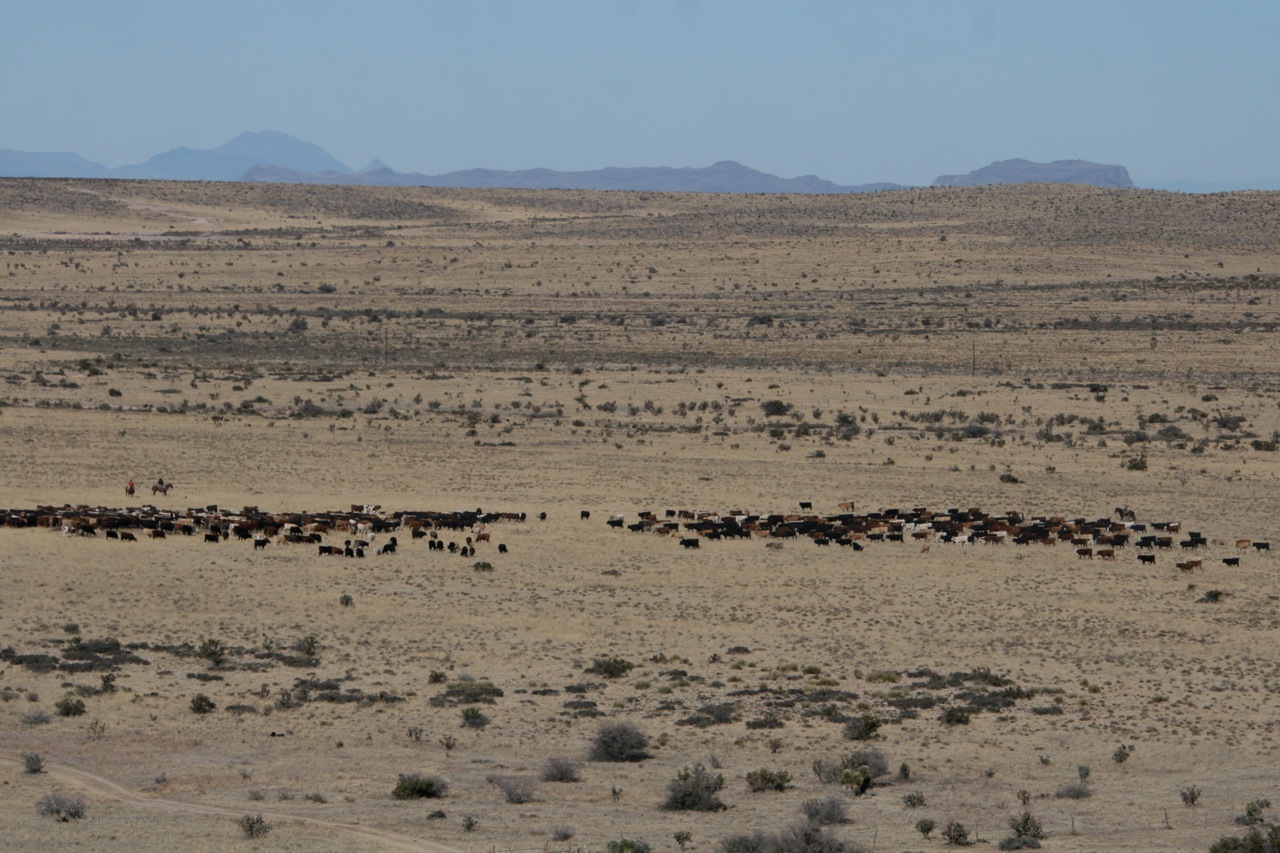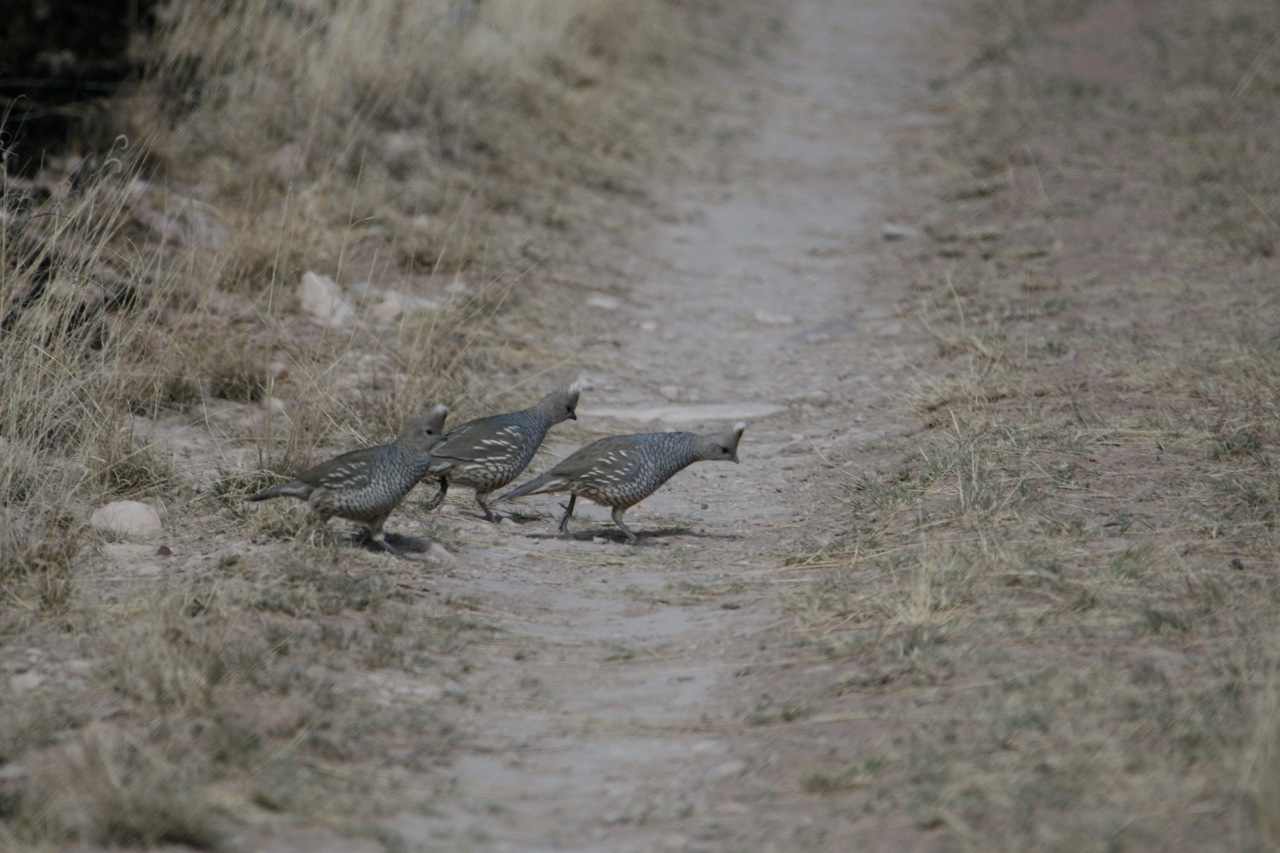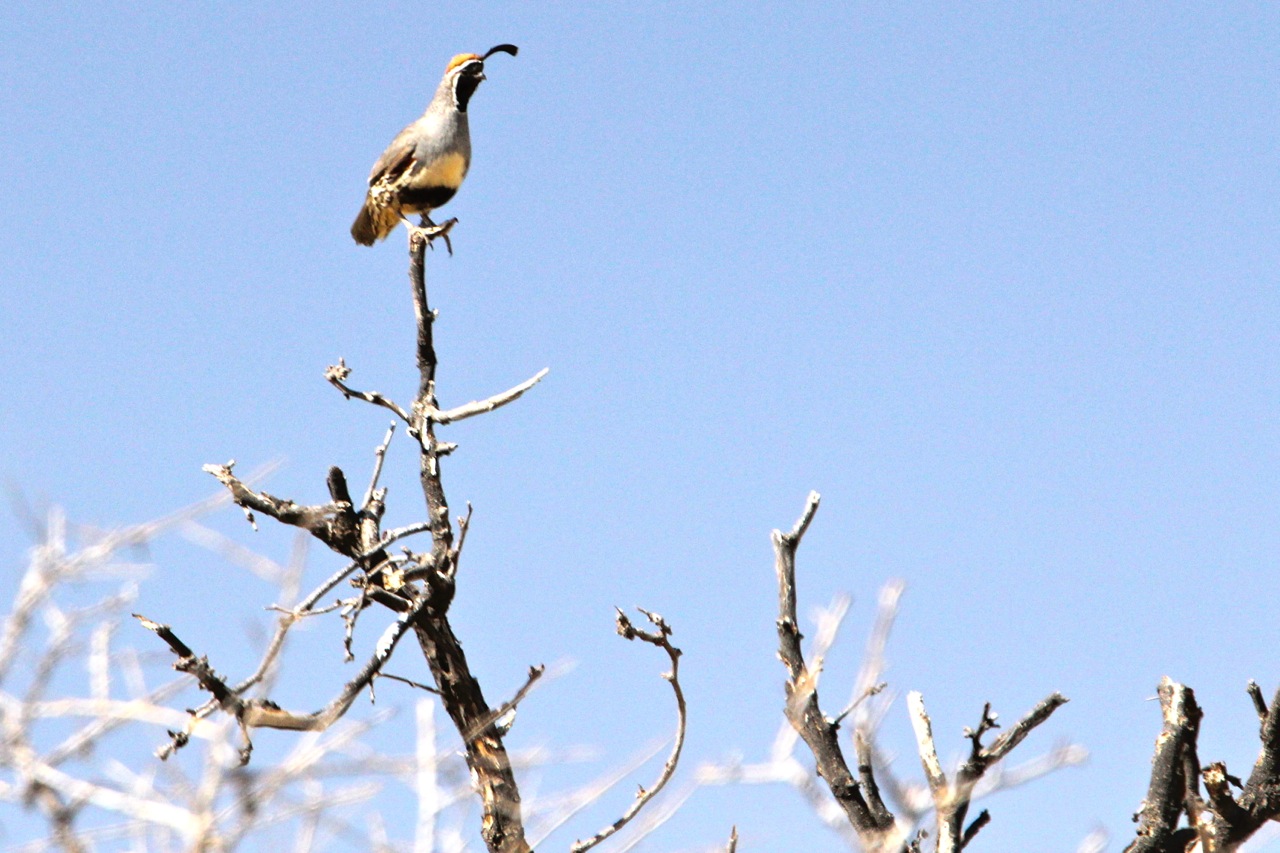The Forgotten Quail Decline: Plight of the Scaled Quail

When it comes to the quail decline in Texas, the northern bobwhite often dominates the spotlight. Much of this focus probably is due to the long-standing tradition and relative ease of bobwhite hunting. Unfortunately, the bobwhite decline often overshadows the decline of another important quail species in Texas—the scaled quail.
The scaled quail is an elusive game bird found throughout the deserts and plains of the southwestern US and northern Mexico. The edges of its the feathers give the appearance of reptile-like scales, which gives rise to its common name. Other common names include cottontop quail (in reference to their white crest) and blue quail (in reference to their bluish coloration). Texas is home to 2 of the 4 subspecies of scaled quail, but only the chestnut-bellied subspecies resides in the Rio Grande Plains. The chestnut-bellied subspecies possesses a slightly darker plumage than the other subspecies and exhibits a reddish-brown patch that runs from the lower breast to the lower abdomen. Chestnut-bellied scaled quail are generally found in the western third of the Rio Grande Plains, approximately west of Highway 281.
The Rio Grande Plains have experienced the highest rate of decline of the species across its geographic range. According to the North American Breeding Bird Survey, scaled quail have been declining at a rate of 5.1% per year. The cause of the decline is unknown but likely involves habitat loss.
Scaled quail in the Rio Grande Plains prefer areas with thick shrub overstories (>35% woody-canopy cover). Due to their tendency to run instead of flush, they also select for areas with an abundance of bare ground and sparse vegetation. Preliminary results of recent research by the Caesar Kleberg Wildlife Research Institute on the Hixon and Storey ranches has shown that scaled quail tend to select areas with a high diversity of native brush species and sparse herbaceous vegetation. Scaled quail avoid vegetation communities that are dominated by non-native grasses and will not cross these areas when they are more than 200 yards wide. Consequently,it appears that large areas of contiguous, native rangeland are important for the species.
Taking this information into account, we hypothesize that the scaled-quail decline in the Rio Grande Plains may be the result of largescale habitat loss and modification cover the past 60 years resulting from (1) root plowing, (2) planting of nonnative grasses, and (3) decreased of stocking rates. Since the 1940s, thousands of acres have been root-plowed in the Rio Grande Plains. This rootplowing typically was done to reduce brush density and open up rangelands for farming and livestock operations. Although root plowing is an effective brush-control practice, it comes at an ecological price. Rootplowing generally decreases woody-plant diversity, reducing the number of woody-plant species from >20 to 1-3. Such plant-community change can have large consequences for wildlifespecies that depend on a variety of woody-plant species such as scaled quail and white-tailed deer. Once the rangelands were cleared of brush, many landowners seeded the rootplowed areas with non-native grasses. Many of these species originated in Africa and were marketed for their speed of establishment and their drought resistance. People thought that a small percentage of these nonnative grasses added to a seed mix was beneficial to the long-term establishment of native grasses.
However, this turned out to be false. These fecund, non-native species eventually spread from their original planting and extended their range across the state, often forming dense monocultures that were detrimental to many wildlife species.
Another management practice that also may have negatively impacted scaled quail is the reduction of stocking rates across many South Texas ranches during the past decade. Ranchers have realized that properly grazed rangelands is a wise management practice in an unpredictable environment that is subject to drought and where hunting is an economically important enterprise. There is no doubt that conservative grazing has favored many wildlife species, including scaled quail. However, such benefits diminish for scaled quail when the vegetation becomes too thick.
Cumulatively, these landscape changes have resulted in a plant community that is 1) higher in overall herbaceous cover because of decreased stocking rates and invasive, non-native plants and 2) lower in woody-plant species diversity due to root plowing. It is likely that these landscape changes have been detrimental to scaled quail and their habitat.
In March 2013, we initiated anintensive research project in LaSalle County to test our hypothesis of the scaled-quail decline and identify possible solutions. We will be using radiotelemetry and GIS to document
the distribution, abundance, ecology, and habitat preferences of scaled quail in the Rio Grande Plains. Our goal for this study is to provide landowners with the necessary knowledge to properly manage and
conserve this unique and elusive quail species.
Richie is a native of Needville, Texas, and Holley is a native of Bound Brook, New Jersey. Both are M.S. candidates with the Caesar Kleberg Wildlife Research Institute at Texas A&M University- Kingsville. Their
research is investigating the ecology and habitat preferences of scaledquail decline in the Rio Grande Plains.
Blue Quail Decline; The Rest of the Story
The above article, published by the well-respected folks at Caesar Kleberg Institute blames quail decline on invasive species, lower stocking rates and root plowing.
No mention is made of the massive use of poisons that is now occurring on the ranges and croplands where quail were once found. Nor of the damage done by set-stocking low numbers of cattle. So, I wrote the following letter.
February 19, 2014
Miss Holly Kline
Mr. Richie Sinclair
Caesar Kleberg Wildlife Research Institute Texas A & M University-Kingsville
700 University Blvd.,
MCS 218 Kingsville, TX 78363
Dear Miss Kline and Mr. Sinclair:
We ranch 50 sections in Hudspeth County, a long way from the CKWRI. The Circle Ranch has blue (scaled) quail, as well as Gambles and a few Mearns. The blue quail is truly a stepchild in Texas quail research, so I first want to thank you for the attention that the Caesar Kleberg Foundation and Texas A&M system have given blues in this study: The Forgotten Quail Decline: Plight of the Scaled Quail.
According to the experts, the disappearance of quail, including scaled quail, remains a mystery.
In problem solving, a good first step is correctly defining the problem. Often, correctly defining the problem makes the answer self-evident. Every item on your list of contributing factors belongs there; however, the list is incomplete. And, in my opinion, the way you have organized the facts misdefines the problem, which will lead to incorrect solutions.
Could you please react to two different thoughts: One relating to cattle and grazing, and the other relating to rangeland and cropland poisons.
Cattle
“Another management practice that also may have negatively impacted scaled quail is the reduction of stocking rates across many South Texas ranches during the past decade. Ranchers have realized that properly grazed rangelands is a wise management practice in an unpredictable environment that is subject to drought and where hunting is an economically important enterprise. There is no doubt that conservative grazing has favored many wildlife species, including scaled quail. However, such benefits diminish for scaled quail when the vegetation becomes too thick.”
As I understand this statement, it is your opinion that reducing cattle numbers is wise and generally beneficial to habitat and most wildlife species.
Based on my personal experience, I have to ask: Is this true?
Enormous amounts of accumulated practical experience on holistic planned grazing have proven that it is not the numbers of cattle, but rather the timing of grazing that determines whether cattle have a positive or negative impact on habitat and therefore wildlife.
Perennial grass plants aren’t harmed by complete defoliation when they’re dormant. The harm (overgrazing) comes with repeated severe defoliation during rapid growth. Since multiple defoliations (overgrazing ) happens when cattle are permanently stocked at any level, it is not numbers of cattle, but time (exposure to grazing) that is the culprit.
In addition to the damaging effects of repeated severe defoliation during rapid growth, there is the other damaging effect of over-rest. This is what results when, because animal numbers are low, large numbers of plants are never grazed it all. As a result of “over-rest,” desert grass plants eventually die.
Death of plants from overgrazing and over-resting are a major cause of desert grassland decline. Habitat decline means blue quail decline, whether in West or South Texas.
The only way to avoid overgrazing is to have a short, intense grazing period followed by adequate rest to allow plant recovery. And, the only way to avoid over-resting is to have a lot animals grazing so that all plants are grazed in the short time available. Then, the animals are removed before plants are repeatedly defoliated and damaged.
Essentially, grass must be grazed in the way that it was grazed in the day of the migrating buffalo herds: a lot of animals, present for a very short period of time, followed by a long recovery.
In other words, timing is the problem, not high animal numbers. In fact, high animals numbers are a necessity!
With this understanding, I must ask: Why is there no mention, whatsoever, of the role of time in your evaluation of the effect of cattle grazing on blue quail and their habitat?
Range and Cropland Poisons
My second question is prompted by the widespread and growing use of poisons on our rangelands and croplands. Herbicide and pesticide use is not mentioned in your paper as a major, or even minor, cause of quail decline.
GMO crops depend on widespread use of Roundup® poison to suppress weeds. Herbicides like Roundup® wipe out everything but the genetically modified crops like soybeans, cotton and corn. With those weeds goes soil life and soil health. We create sterile areas that can’t support quail because the plants, insects, and soil life they need are all dead! The rangelands around the CKWRI contain vast tracts where croplands cultivated using Roundup and Roundup-ready crops are interspersed with rangelands, which are seeing fewer quail over time.
In addition to the widespread poisoning of croplands, rangelands are also being poisoned in the name of brush control. I was recently on one of the big South Texas quail camps and witnessed a prime example of this. To suppress mesquite and other brush, spot applications of poisons were sprayed directly on to trees. Consider this: A 10,000-acre pasture containing only 25 trees per acre, would require 250,000 applications of poison.
These cropland and range poisons enter into the soil, killing forbs, brush, trees, and also soil life. They persist in ground and subsurface water, eventually finding their ways into gullies, drainages, creeks, rivers, estuaries and bays, eventually affecting fish nurseries , oyster reefs, marine plants that support wintering waterfowl and on and on and on.
In far-West Texas, poisons like Spike are usually applied from the air. The Borderlands Research Institute at Sul Ross State University advises using Spike, provided that it is spot-applied, under the theory that spot-application makes it safe for quail. (Scenarios similar to this one play out everywhere blue quail are found.) I disagree that poison applications, even carefully controlled ones, are safe for quail. Although the lethality of poisons may subside over time, the havoc wreaked on plants and soil life continues because whatever has been killed remains dead.
And yet, if we interpret your omissions as indications of your thoughts, your conclusion is these massive poisoning programs have no effect, large or small, on blue quail. My question is: How could they not?
The primary changes on farms and rangelands in the last 40 years have been destocking leading to lethal over-rest of ranges and the application of a wide variety of poisons. Increased levels of these practices have coincided with the disappearance of all quail including blues.
Based on my experience and my observations, these two factors should head the list, along with the others that you identified. Then, after correctly defining the problem finding the answer that solves the quail decline problem lies in correctly connecting those dots.
As this study was designed and presented by CKWRI and the Texas A&M System, it appears that there are institutional blinders regarding planned grazing (timing not numbers), and, cropland and rangeland poisons on blue quail.
After considering my points, please share your opinion with me. Am I conflating grazing timing, poisons, and quail disappearance, or are they linked? Why or why not?
Thank you again for allocating resources to the plight of scaled quail. I look forward to hearing from you.
Sincerely,
Christopher Gill
Circle Ranch
Van Horn, Texas
CG:sp
C: Fred Bryant (Head of Quail Research – CKI)
The Circle Ranch Blog – www.circleranchtx.com
Gambels are affected along with blues…

